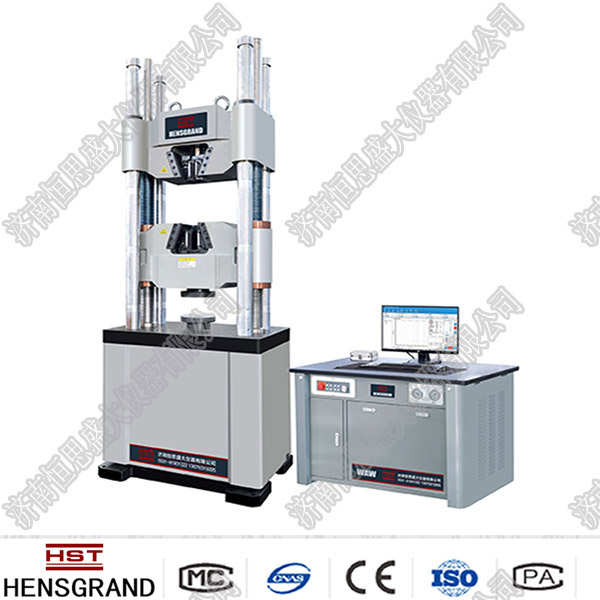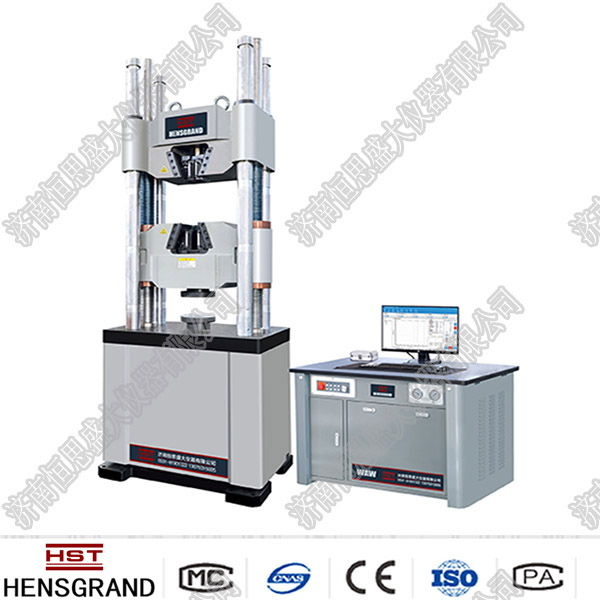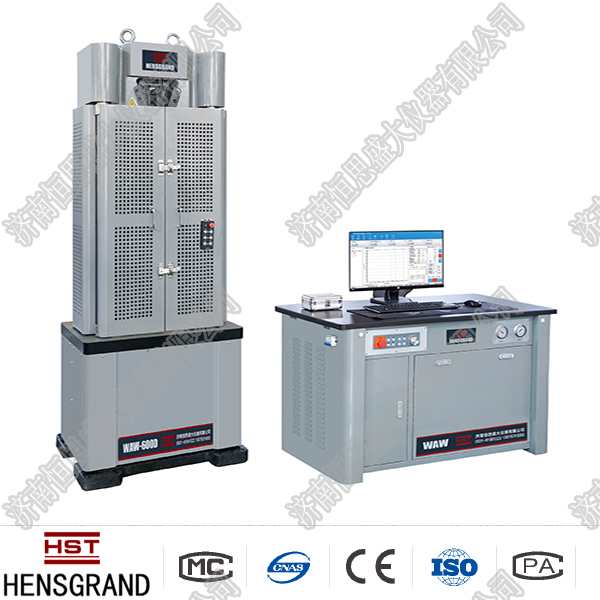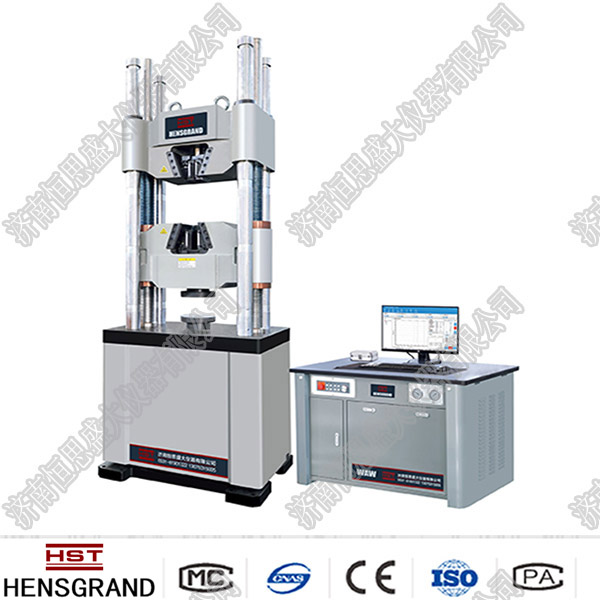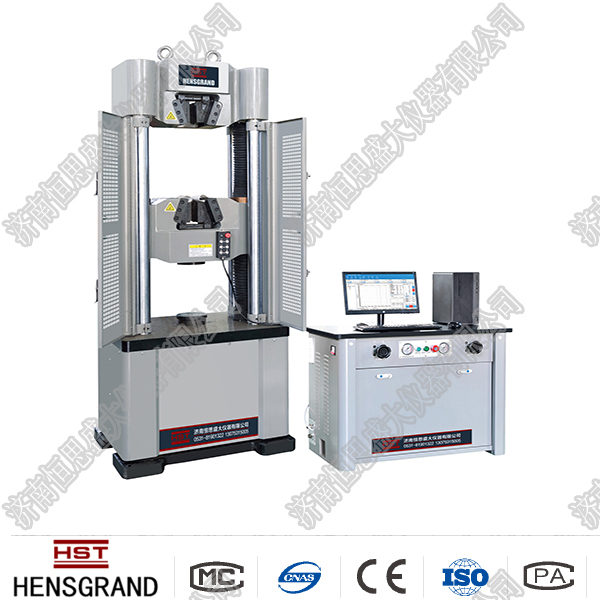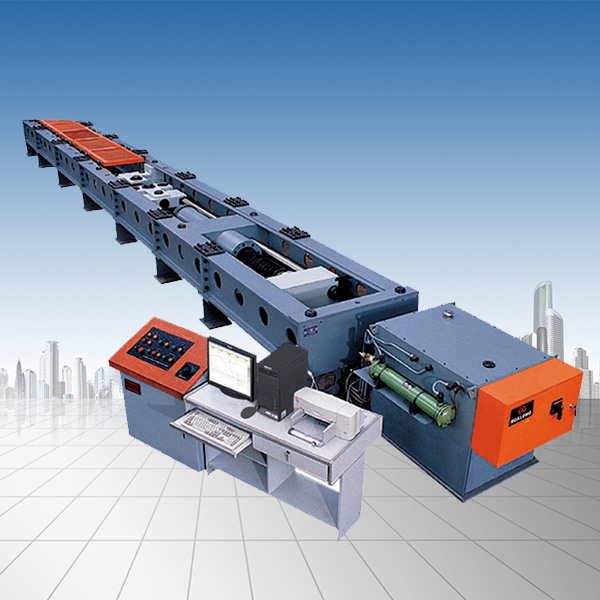Industry Information
Guide to selecting sensors of test machine
Release time:2018-11-23 source:Jinan Hengsi Shanda Instrument Co., Ltd. Browse:
Modern sensors have very different principles and structures. How to reasonably select sensors based on specific measurement purposes, measurement objects and measurement environment is the first problem to be solved when measuring a certain quantity. When the sensor is determined, match itThe measurement method and measuring equipment can also be determined. The success or failure of the measurement results depends to a large extent on whether the sensor is selected reasonably.
1. Selection of sensitivity
Generally, within the linear range of the sensor, it is desirable that the higher the sensitivity of the sensor, the better. Because only when the sensitivity is high, the value of the output signal corresponding to the measured change is relatively large, which is conducive to signal processing. But it should be noted that the sensor has high sensitivity,External noise that is not measured is also easily mixed in and will be amplified by the amplification system, affecting the measurement accuracy. Therefore, the sensor itself is required to have a high signal-to-noise ratio to minimize factory disturbance signals introduced from the outside world.
The sensitivity of the sensor is directional. When the measured is a one-vector and its directionality is high, other sensors with low direction sensitivity should be selected; if the measured is a multi-dimensional vector, it is required to transmit
2. Determine the type of sensor based on the measurement object and the measurement environment
To carry out a specific measurement work, we must first consider what principle the sensor is used, which requires analysis of many factors before we can determine it. Because, even when measuring the same physical quantity, there are sensors of multiple principles to choose from, which principle is used to transmitThe sensor is more suitable, so the following specific issues need to be considered based on the characteristics of the measurement and the conditions of the use of the sensor: the size of the measurement range; the requirements for the sensor volume of the measured position; the measurement method is contact type or non-contact type; the signal extraction method, wiredOr contactless measurement; the source of the sensor, whether it is domestically produced or imported, whether the price can be affordable, or developed by itself.
After considering the above issues, you can determine which type of sensor to choose, and then consider the specific performance indicators of the sensor.
The smaller the cross sensitivity of the sensor, the better.
3. Stability
The ability of the sensor to remain unchanged after a period of use is called stability. In addition to the sensor structure, the factors that affect the long-term stability of the sensor are mainly the sensor's use environment. Therefore, to make the sensor have good stability, the sensorWe must have strong environmental adaptability.
Before selecting a sensor, the use environment should be investigated and the appropriate sensor should be selected according to the specific use environment, or appropriate measures should be taken to reduce the impact of the environment.
The stability of the sensor has quantitative indicators. After the service life has exceeded, it should be recalibrated before use to determine whether the performance of the sensor has changed.
In some situations where sensors are required to be used for a long time but cannot be easily replaced or calibrated, the stability requirements of the selected sensors are stricter and must be able to withstand the test of a long time.
4. Accuracy
Accuracy is an important performance indicator of the sensor, and it is an important link that affects the measurement accuracy of the entire measurement system. The higher the accuracy of the sensor, the more expensive it is. Therefore, the accuracy of the sensor can meet the accuracy requirements of the entire measurement system., don't choose too high. This allows for the selection of cheaper and simpler sensors among many sensors that meet the same measurement purpose.
If the purpose of measurement is qualitative analysis, it is enough to choose a sensor with high repetition accuracy, and it is not advisable to choose a sensor with high meter accuracy. If it is for quantitative analysis, accurate measurement values must be obtained, and a sensor with the accuracy level that can meet the requirements needs to be selected.
For certain special use occasions, if you cannot select a suitable sensor, you need to design and manufacture the sensor yourself. The performance of homemade sensors should meet the requirements of use.
5. Frequency response characteristics
The frequency response characteristics of the sensor determine the frequency range to be measured, and the measurement conditions must be maintained within the allowable frequency range. In fact, the sensor's response always has a fixed delay, and the shorter the delay time, the better.
The sensor has a high frequency response, and the measurable signal frequency range is wide. Due to the influence of structural characteristics, the mechanical system has a greater inertia, and the frequency of the measurable signal of the sensor with low frequency is lower.
In dynamic measurement, the response characteristics of the signal (steady state, transient, random, etc.) should be based on the signal's characteristics to avoid excessive errors.
6. Linear range
The linear range of the sensor refers to the range where the output is proportional to the input. In theory, within this range, the sensitivity remains constant. The wider the linear range of the sensor, the larger its range, and it can ensure a certain measurement accuracy. When selecting a sensor,After determining the type of sensor, the first thing to do is to see if its range meets the requirements.
But in fact, no sensor can guarantee linearity, and its linearity is also relative. When the required measurement accuracy is relatively low, sensors with small nonlinear errors can be approximately regarded as linear within a certain range, which will bring great results to the measurement.convenient.
- Previous article:Diversified testing functions of rubber tension machines
- Next article:The 2010 Xi'an Granule Academic Conference was grandly opened
Recommended productsPRODUCTS


















